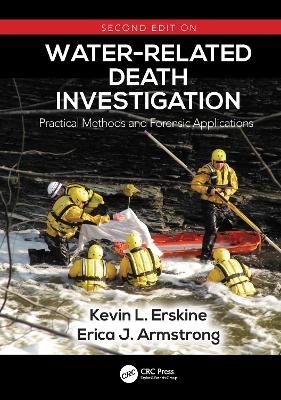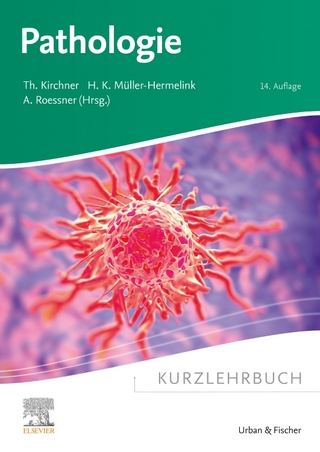
Water-Related Death Investigation
CRC Press (Verlag)
978-0-367-25154-3 (ISBN)
Nearly ten years after the first edition of Water-Related Death Investigation: Practical Methods and Forensic Applications, water death cases continue to be improperly investigated. The pathologist’s report can determine the cause of death as a drowning, but the manner of death is the most challenging to prove. The report will not determine if a victim jumped into the water to commit suicide, fell into the water accidentally, or was pushed in as a homicidal act. Many drowning cases do not reflect injury to the body, so evidence collected at the scene plays a vital role.
The importance of an on-scene body assessment cannot be overemphasized. Often, the body evidence begins to change rapidly upon recovery and may not be present during an autopsy. Written statements on the scene are an effective tool to use to determine the accuracy of information given to arriving officers. These statements need to be written by the witnesses themselves as well as the reporting person. The "Show Me" technique can also help reveal discrepancies in a person’s version of what occurred as well as aid in providing the most details to an incident as is humanly possible.
This second edition includes updated information on the latest technology to assist water death investigators. Parabon Snapshot can help determine the faceless identity of skeletal remains and help locate potential suspects using the science of DNA. Drones can aid in locating missing persons as well as human remains, even months after death. Updated information is provided regarding fingerprints from submerged objects, and Carbon-14 can help determine the origin of a found corpse.
Key Features:
Thoroughly reviews the physiological aspects of drowning
Reveals the investigative characteristics inherent to various scenes of water-related deaths
Highlights certain "red flag" indicators that may point to foul play or scene staging
Outlines autopsy protocols, trial preparation, and expert witness testimony
Provides numerous case studies and numerous illustrations to further clarify key points presented in the text
Coauthored by a Master Water Death Investigator and an experienced forensic pathologist, Water-Related Death Investigation: Practical Methods and Forensic Applications, Second Edition merges the essentials of evidence collection and field investigation with autopsy best practices and laboratory testing. It will continue to serve as a valuable resource for the various professionals involved in these cases.
Erica J. Armstrong, MD is a forensic pathologist and deputy medical examiner at the Cuyahoga County Medical Examiner’s Office (CCMEO) in Cleveland, Ohio. She is a graduate of Case Western Reserve University School of Medicine. She completed her training in anatomic and clinical Pathology at the University Hospitals Cleveland Medical Center-Institute of Pathology. She completed her training in forensic pathology at CCMEO from 2000-2002 under the mentorship of former Cuyahoga County Coroner Dr. Elizabeth K. Balraj and the late Deputy Chief Coroner Dr. Robert C. Challener. She is Director of Medical Education at CCMEO and utilizes the position to provide a comprehensive educational experience to visiting medical students, medical residents, allied health students, and other students and professionals with a connection to medicolegal death investigation. She holds academic appointments to medical and osteopathic schools. She is author and co-author of several journal articles on the topics of forensic pathology, forensic toxicology, anatomic and clinical pathology and the biological sciences. She has authored a textbook on the topic of death reporting and death certification and maintains an educational blogsite on this subject matter. Kevin Erskine graduated from Hocking College in 1982 with an associate’s degree in natural resources law enforcement. He also obtained mountain rescue, search and rescue, and EMT certifications. He began his career with the Ohio State Park Police in 1986 and developed the only State of Ohio dive team in 1998. In 2000, he codeveloped the Children’s Ice Drowning Prevention Workshop, which teaches children self-rescue techniques in the event of an ice accident. He designed a multiagency training scenario for an airplane crash in Lake Erie. Within months of the training scenario, an actual plane crash occurred within a quarter mile of the training site. In 2005, he developed the Master Water Death Investigator curriculum for the Ohio Peace Officer’s Training Academy (OPOTA). He is an OPOTA-certified Master Criminal Investigator who has earned numerous life-saving awards for rescues of drowning victims in the waters of Lake Erie. He was recognized as "Citizen of the Year" by the Cleveland Fire Department in 2006 for the rescue of an active drowning victim within his jurisdictional waters. He has attended police diver symposiums in Hamilton, Ontario, Canada; West Point; and Indianapolis. In 2011, he retired after 25 years of service to the State of Ohio. He currently serves as the training coordinator for Hope Christian Church First Responder Team in Avon, Ohio, where he lives with his wife and two sons.
1 Introduction 2 Investigative Duties on Scene 3 On-Scene Body Assessment 4 Case Investigation: Obtaining Decedent, Witness, Suspect, and First Responder Information 5 Pretrial Preparation for the Field Investigator 6 Medicolegal Investigation of Deaths: Initial Processing 7 The Medicolegal Autopsy 8 Asphyxia 9 The Forensic Pathological Aspects of Deaths Due to Drowning and Bodies Recovered from Fluid Environments 10 The Forensic Toxicological Aspects of Deaths Due to Drowning and Bodies Recovered from Fluid Environments 11 Water-Related Deaths by Manner 12 Personnel Training
| Erscheinungsdatum | 20.05.2021 |
|---|---|
| Zusatzinfo | 4 Tables, color; 51 Line drawings, color; 184 Halftones, color; 235 Illustrations, color |
| Verlagsort | London |
| Sprache | englisch |
| Maße | 178 x 254 mm |
| Gewicht | 1061 g |
| Themenwelt | Medizin / Pharmazie ► Allgemeines / Lexika |
| Studium ► 2. Studienabschnitt (Klinik) ► Pathologie | |
| Naturwissenschaften ► Biologie | |
| Recht / Steuern ► Strafrecht ► Kriminologie | |
| Sozialwissenschaften | |
| ISBN-10 | 0-367-25154-X / 036725154X |
| ISBN-13 | 978-0-367-25154-3 / 9780367251543 |
| Zustand | Neuware |
| Informationen gemäß Produktsicherheitsverordnung (GPSR) | |
| Haben Sie eine Frage zum Produkt? |
aus dem Bereich


